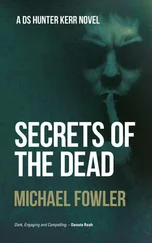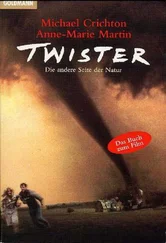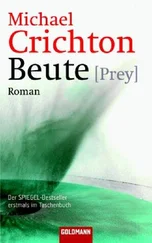Michael Crichton - Eaters of the Dead
Здесь есть возможность читать онлайн «Michael Crichton - Eaters of the Dead» весь текст электронной книги совершенно бесплатно (целиком полную версию без сокращений). В некоторых случаях можно слушать аудио, скачать через торрент в формате fb2 и присутствует краткое содержание. Жанр: Детская проза, на английском языке. Описание произведения, (предисловие) а так же отзывы посетителей доступны на портале библиотеки ЛибКат.
- Название:Eaters of the Dead
- Автор:
- Жанр:
- Год:неизвестен
- ISBN:нет данных
- Рейтинг книги:4 / 5. Голосов: 1
-
Избранное:Добавить в избранное
- Отзывы:
-
Ваша оценка:
- 80
- 1
- 2
- 3
- 4
- 5
Eaters of the Dead: краткое содержание, описание и аннотация
Предлагаем к чтению аннотацию, описание, краткое содержание или предисловие (зависит от того, что написал сам автор книги «Eaters of the Dead»). Если вы не нашли необходимую информацию о книге — напишите в комментариях, мы постараемся отыскать её.
Eaters of the Dead — читать онлайн бесплатно полную книгу (весь текст) целиком
Ниже представлен текст книги, разбитый по страницам. Система сохранения места последней прочитанной страницы, позволяет с удобством читать онлайн бесплатно книгу «Eaters of the Dead», без необходимости каждый раз заново искать на чём Вы остановились. Поставьте закладку, и сможете в любой момент перейти на страницу, на которой закончили чтение.
Интервал:
Закладка:
Most impressive of all, Neanderthal man was the first of our ancestors to bury his dead ritually. At Le Moustier, a teenage boy was placed in a trench, in a sleeping position; he was provided with a supply of flint tools, a stone axe, and roasted meat. That these materials were for the use of the deceased in some afterlife is undisputed by most anthropologists.
There is other evidence of religious feeling: in Switzerland there is a shrine to the cave bear, a creature worshiped, respected, and also eaten. And at Shanidar Cave in Iraq, a Neanderthal was buried with flowers in the grave.
All this points to an attitude toward life and death, a self-conscious view of the world, which lies at the core of what we believe distinguishes thinking man from the rest of the animal world. On existing evidence, we must conclude this attitude was first displayed by Neanderthal man.
The general reassessment of Neanderthal man coincides with the rediscovery of Ibn Fadlan’s contact with the “mist monsters”; his description of these creatures is suggestive of Neanderthal anatomy, and raises the question of whether the Neanderthal form did, in fact, disappear from the earth thousands of years ago, or whether these early men persisted into historic times.
Arguments based on analogies cut both ways. There are historical examples of a handful of people with technologically superior culture wiping out a more primitive society in a matter of years; that is largely the story of the European contact with the New World. But there are also examples of primitive societies existing in isolated areas, unknown to more advanced, civilized peoples nearby. Such a tribe was recently discovered in the Philippines.
The academic debate on Ibn Fadlan’s creatures can be neatly summarized by the viewpoints of Geoffrey Wrightwood, of Oxford University, and E. D. Goodrich, of the University of Philadelphia. Wrightwood says [1971]: “The account of Ibn Fadlan provides us with a perfectly serviceable description of Neanderthal men, coinciding with the fossil record and our suppositions about the cultural level of these early men. We should accept it immediately, had we not already decided these men vanished without a trace some 30-40,000 years previously. We should remember that we only believe this disappearance because we have found no fossils of a later date, and the absence of such fossils does not mean that they do not, in fact, exist.
“Objectively, there is no a priori reason to deny that a group of Neanderthals might have survived very late in an isolated region of Scandinavia. In any case this assumption best fits the description of the Arabic text.”
Goodrich, a paleontologist well known for his skepticism, takes the contrasting view [1972]: “The general accuracy of Ibn Fadlan’s reporting may tempt us to overlook certain excesses in his manuscript. These are several, and they arise either from cultural preconditioning, or from a storyteller’s desire to impress. He calls the Vikings giants when they most certainly were not; he emphasizes the dirty, drunken aspects of his hosts, which less fastidious observers did not find striking. In his report of the so-called ‘wendol,’ he places great importance on their hairiness and brutish appearance when, in fact, they may not have been so hairy, or so brutish. They may simply have been a tribe of Homo sapiens , living in isolation and without the level of cultural attainment manifested by the Scandinavians.
“There is internal evidence, within the body of the Ibn Fadlan manuscript, to support the notion that the ‘wendol’ are actually Homo sapiens . The pregnant female figurines described by the Arab are highly suggestive of the prehistoric carvings and figurines to be found at the Aurignacian industry sites in France and of the Gravettian finds in Willendorf, Austria, Level 9. Both Aurignacian and Gravettian cultural levels are associated with essentially modern man, and not Neanderthal Man.
“We must never forget that to untrained observers, cultural differences are often interpreted as physical differences, and one need not be particularly naive to make this mistake. Thus, as late as the 1880s it was possible for educated Europeans to wonder aloud whether Negroes in primitive African societies could be considered human beings after all, or whether they represented some bizarre mating of men and apes. Nor should we overlook the degree to which societies with vastly differing degrees of cultural attainment may exist side by side: such contrasts appear today, for example, in Australia, where the stone age and the jet age can be found in close proximity. Thus in interpreting the descriptions of Ibn Fadlan we need not postulate a Neanderthal remnant, unless we are fancifully inclined to do so.”
In the end, the arguments stumble over a well-known limitation to the scientific method itself. The physicist Gerhard Robbins observes that “strictly speaking, no hypothesis or theory can ever be proven. It can only be disproven. When we say we believe a theory, what we really mean is that we are unable to show that the theory is wrong-not that we are able to show, beyond doubt, that the theory is right.
“A scientific theory may stand for years, even centuries, and it may accumulate hundreds of bits of corroborating evidence to support it. Yet a theory is always vulnerable, and a single conflicting finding is all that is required to throw the hypothesis into disarray, and call for a new theory. One can never know when such conflicting evidence will arise. Perhaps it will happen tomorrow, perhaps never. But the history of science is strewn with the ruins of mighty edifices toppled by an accident, or a triviality.”
This is what Geoffrey Wrightwood meant when he said at the Seventh International Symposium on Human Paleontology in Geneva in 1972: “All I need is one skull, or a fragment of a skull, or a bit of jaw. In fact, all I need is one good tooth, and the debate is concluded.”
Until that skeletal evidence is found, speculation will continue, and one may adopt whatever stance satisfies an inner sense of the fitness of things.
SOURCES
Yakut ibn-Abdallah MS, a geographical lexicon,?A.D. 1400. Nos. 1403A-1589A, Archives University Library, Oslo, Norway.
Trans:
Blake, Robert, and Frye, Richard; in Byzantina -Metabyzantina: A Journal of Byzantine and Modern Greek Studies , New York, 1947.
Cook, Albert S.; New York, 1947.
Fraus-Dolus, Per; Oslo, 1959-1960.
Jorgensen, Olaf, 1971, unpublished
Nasir, Seyed Hossein; 1971, unpublished.
St. Petersburg MS, a local history, published by the Academy of St. Petersburg, 1823. Nos. 233M-278M, Archives University Library, Oslo, Norway.
Trans:
Fraus-Dolus, Per; Oslo, 1959-1960.
Stenuit, Roger; 1971, unpublished.
Soletsky, V. K.; 1971, unpublished.
Ahmad Tusi MS, a geography, A.D. 1047, papers of J. H. Emerson. Nos. LV 01-114, Archives University Library, Oslo, Norway.
Trans:
Fraus-Dolus, Per; Oslo, 1959-1960.
Nasir, Seyed Hossein; 1971, unpublished.
Hitti, A. M.; 1971, unpublished.
Amin Razi MS, a history of warfare, A.D. 1585-1595, papers of J. H. Emerson. Nos. LV 207-244, Archives University Library, Oslo, Norway.
Trans:
Fraus-Dolus, Per; Oslo, 1959-1960.
Bendixon, Robert; 1971, unpublished.
Porteus, Eleanor; 1971, unpublished.
Xymos MS, a fragmentary geography,? date, bequest estate A. G. Gavras. Nos. 2308T-2348T, Archives University Library, Oslo, Norway.
Trans:
Fraus-Dolus, Per; Oslo, 1959-1960.
Bendixon, Robert; 1971, unpublished.
Porteus, Eleanor; 1971, unpublished.
II. SECONDARY SOURCES
Berndt, E., and Berndt, R. H. “An Annotated Bibliography of References to the Manuscript of Ibn Fadlan from 1794 to 1970,” Acta Archaeologica , VI: 334-389, 1971.
Читать дальшеИнтервал:
Закладка:
Похожие книги на «Eaters of the Dead»
Представляем Вашему вниманию похожие книги на «Eaters of the Dead» списком для выбора. Мы отобрали схожую по названию и смыслу литературу в надежде предоставить читателям больше вариантов отыскать новые, интересные, ещё непрочитанные произведения.
Обсуждение, отзывы о книге «Eaters of the Dead» и просто собственные мнения читателей. Оставьте ваши комментарии, напишите, что Вы думаете о произведении, его смысле или главных героях. Укажите что конкретно понравилось, а что нет, и почему Вы так считаете.









